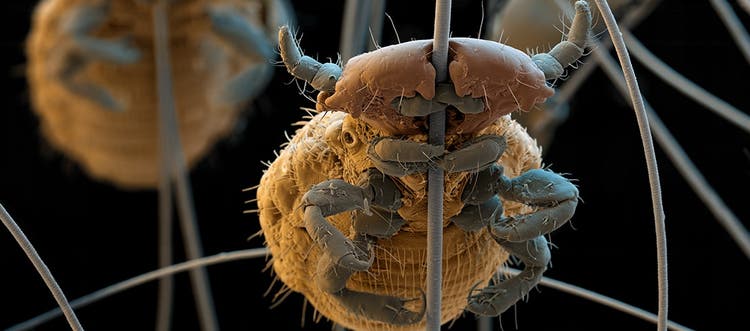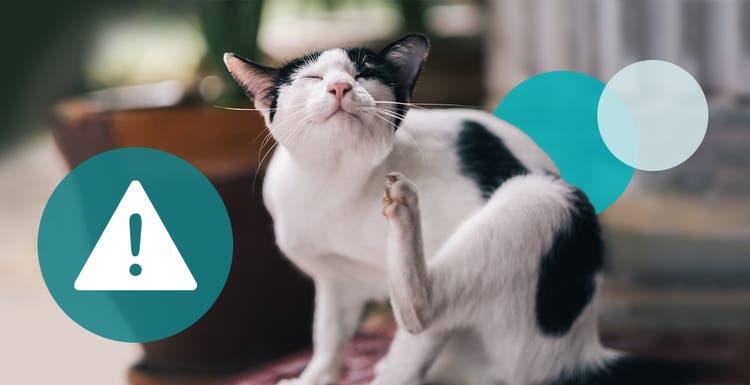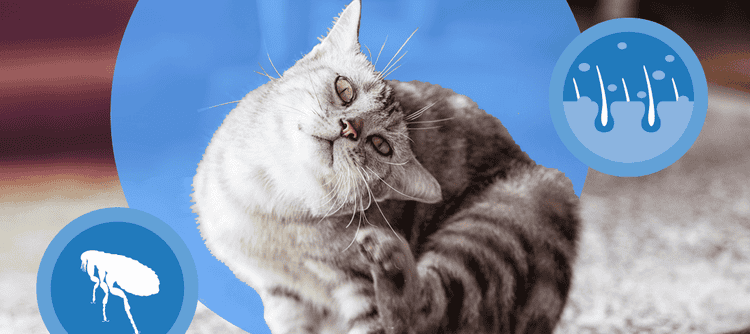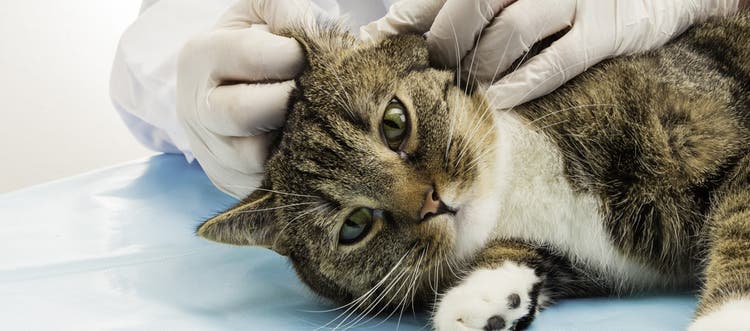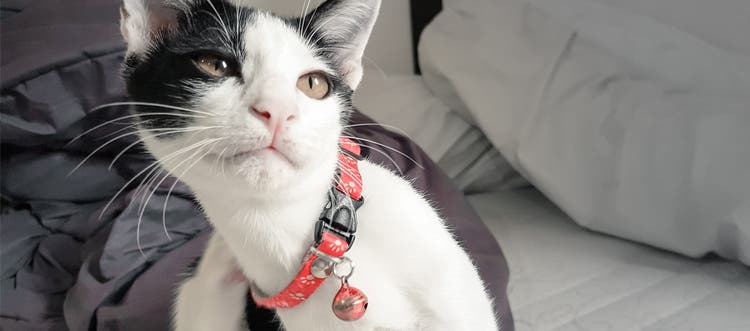If you notice your cat furiously scratching, here’s how to help identify whether they have fleas or lice.
If you see your cat itching and scratching, you may jump to the conclusion that they have fleas. While this is a possibility, fleas aren’t the only parasite that can cause your cat to itch. Though it’s uncommon, lice might also be the culprit.
Here’s how to figure out whether your cat has chewing lice or fleas, and what to do if they’ve been infested.
How Do Cats Get Lice?
Unlike fleas, which usually come from the environment, lice are typically spread from another infected cat or from unsanitary grooming tools. Lice are more commonly seen in cats with long or matted hair, in older cats that can no longer groom themselves, in young kittens or in feral, stray or shelter animals.
What’s the Difference Between Fleas and Lice?
| Fleas | Lice |
Appearance | Brown or reddish brown, flat, six-legged insects with no wings | Tan to yellow with a triangular head, flat like a pancake, six-legged insects with no wings |
Behavior | Bite and cut into skin Feed on blood Move around and jump quickly | Bite and chew on skin Feed on dead skin and skin debris such as wounds, skin oil, etc. Attach themselves to strands of hair |
Most Active Season | Summer | Winter |
Bites | Raised, swollen red bumps that can cause flea allergy dermatitis, skin infections and hair loss | Small, extremely itchy bumps that can cause sores or infections |
Eggs | Translucent or white Small and difficult to spot Fall off pet hair and spread around your house and yard | Translucent and oval shaped Attached to pet hair |
What Are the Signs of Lice on Cats?
Just like in humans, lice will make your cat extremely itchy in the infected area(s). Your cat’s coat might lose some luster or be dryer than usual, or they could experience hair loss, especially around the ears, neck, shoulders and anal area.
Can Lice Spread to My Family or Other Pets?
Lice are species-specific, so if your cat has lice, it is nearly impossible for the lice to infect you, your kids or the family dog — although other cats in your home could be at risk.
How Do I Get Rid of Lice on My Cat?
If your cat has mats or clumps of hair, start by clipping their fur. You can also use a flea comb to remove the eggs as well as any lice that have already hatched.
Your best option is to talk to your veterinarian about a cat-specific treatment; they may also prescribe an antibiotic or deworming medication, as lice (and fleas) can transmit tapeworms. Even after removing the adult lice, eggs may continue to hatch, so it’s important to repeat the treatment as necessary and keep a close eye on your cat for at least two weeks after you see the last insect. Re-treatment will vary based on the product you use (treatment spray or monthly topical treatment), so make sure to read the directions before use.
Also be sure to wash anything your cat uses regularly (such as bedding, collars, brushes, etc.) with hot water and soap or with the spray treatment you used on your cat. And since other cats in your household are also at risk of a lice infestation, make sure to treat them as well.
Though it’s relatively uncommon for cats to get lice, it’s important to be aware and prepared so you can resolve the issue quickly if it does occur.
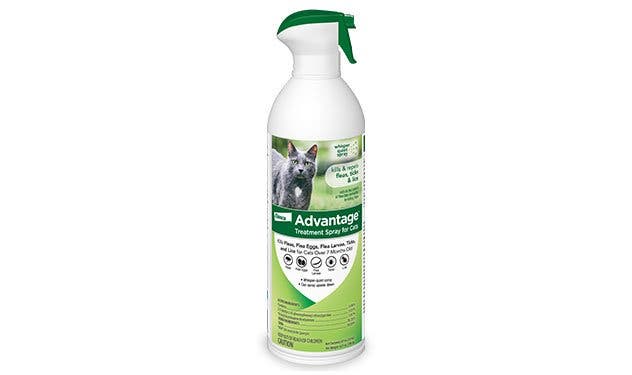
Advantage® Treatment Spray for Cats
An on-pet treatment spray that kills and repels fleas, ticks and lice.
